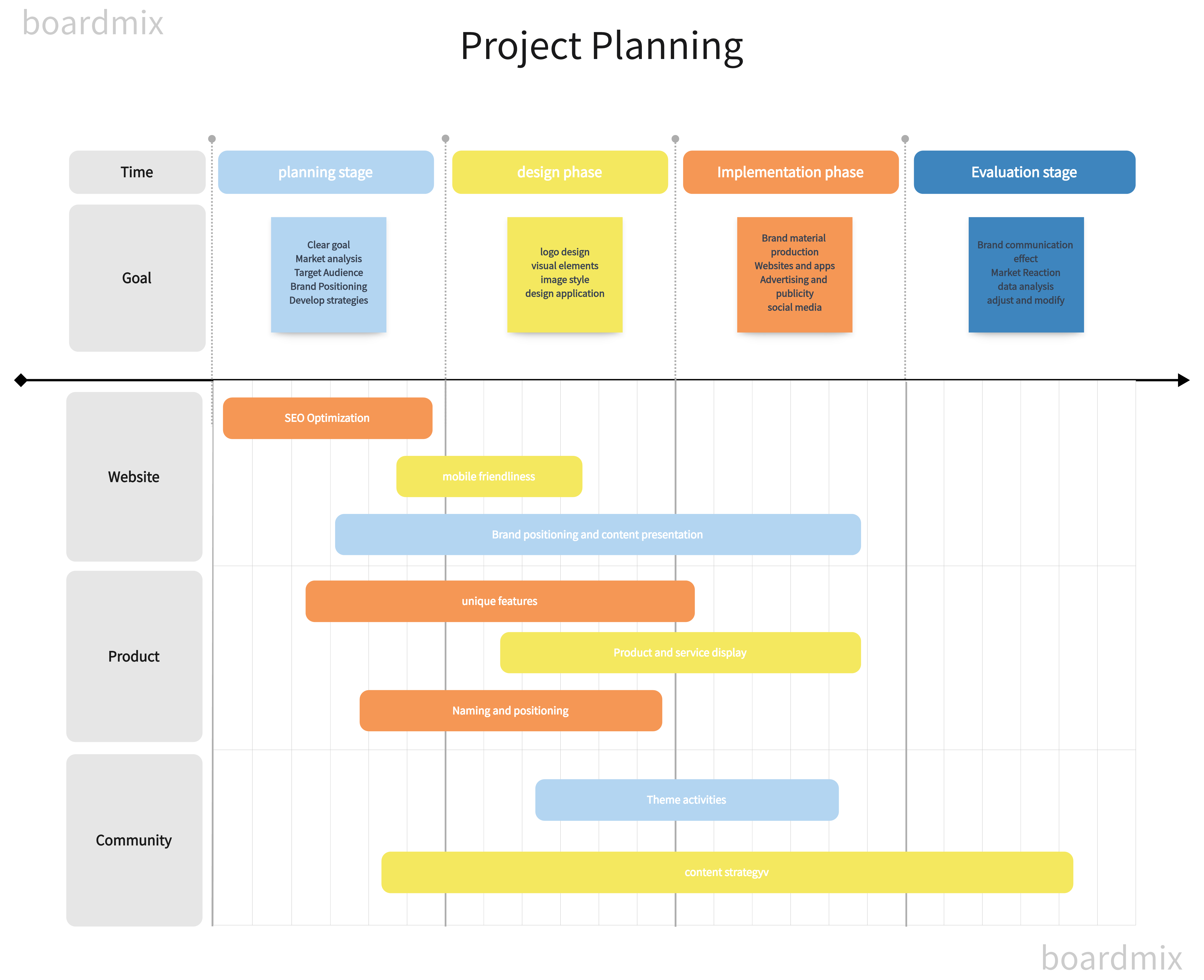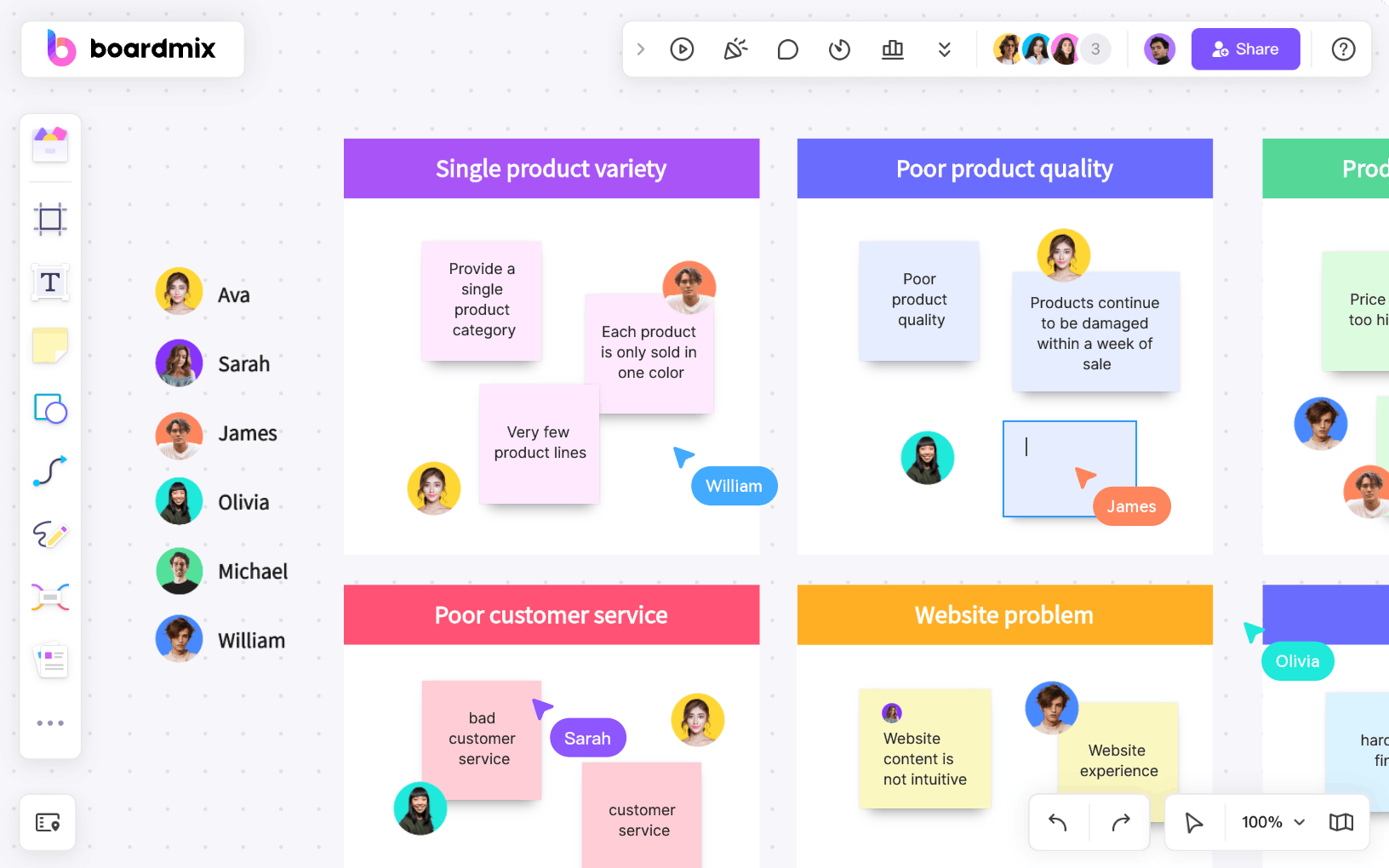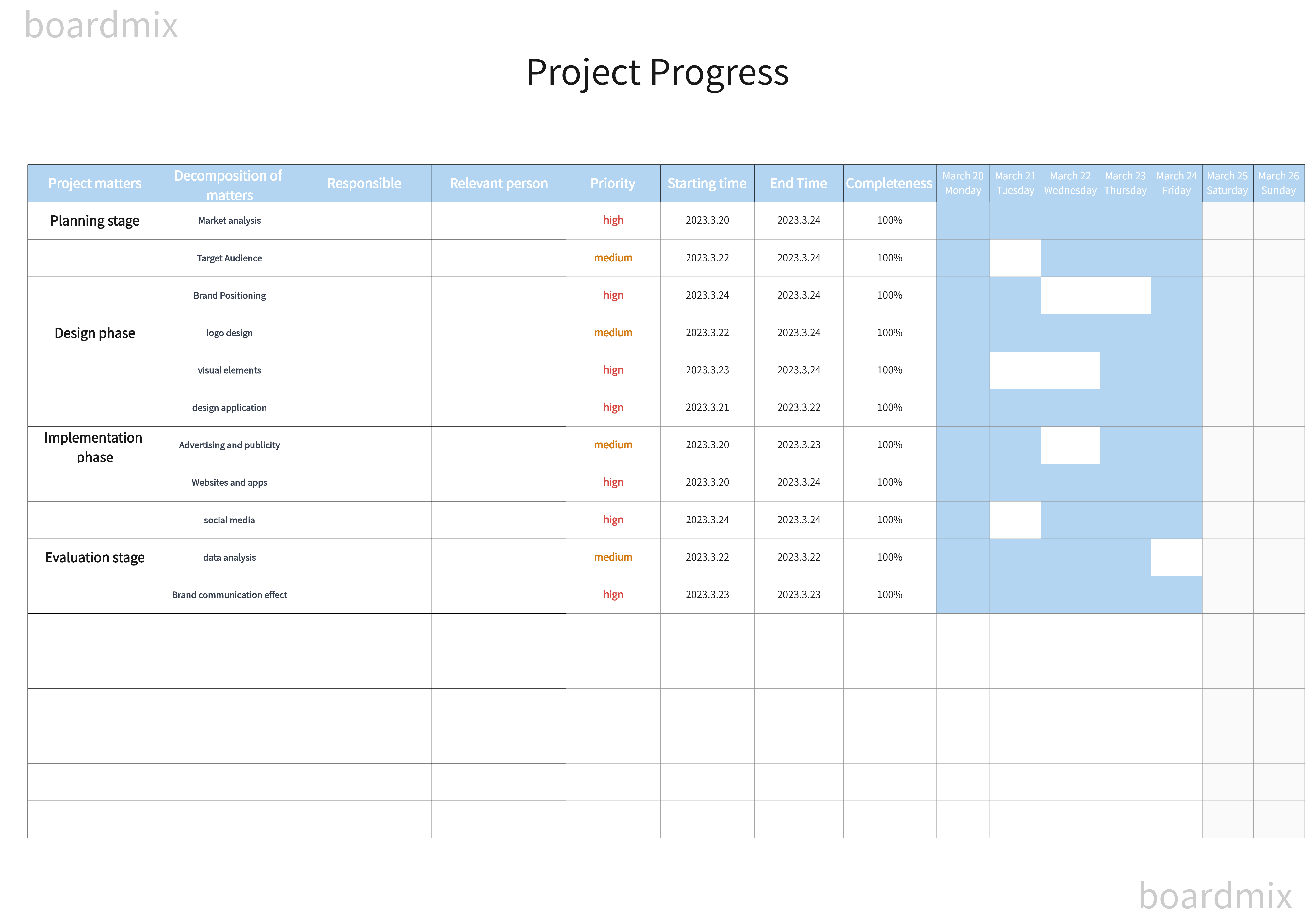What is Project Planning
Project planning is the process of defining the goals, objectives, tasks, and resources required to complete a project successfully. It involves identifying and organizing the necessary steps, timelines, and responsibilities to achieve the desired outcome. Project planning helps in setting realistic expectations, allocating resources efficiently, and managing risks effectively. It also provides a roadmap for the project team, enabling them to stay focused and on track throughout the project's lifecycle. Effective project planning ensures that projects are completed on time, within budget, and meet the desired quality standards.

Key Components of Project Plans
Project plans typically include several key components. These components provide a structured approach to managing and executing a project. Here are some of the key components you should consider including in your project plan:
- Project Objective: Clearly define the objective of the project. This should explain what you aim to achieve through the project and what success looks like.
- Scope: Define the boundaries and deliverables of the project. This includes what is included in the project and what is not. It helps to set expectations and ensure everyone is on the same page.
- Timeline: Create a timeline that outlines the start and end dates of the project, as well as any major milestones or deadlines. This helps to keep the project on track and ensures that tasks are completed promptly.
- Tasks and Activities: Break down the project into smaller tasks and activities. Assign responsibilities to team members and provide details on what needs to be done, when, and by whom.
- Resources: Identify the resources required for the project, such as personnel, equipment, and materials. Allocate resources accordingly to ensure they are available when needed.
- Budget: Develop a budget for the project that outlines the estimated costs for each task or activity. This helps to manage expenses and ensure that the project stays within budget.
- Risks and Issues: Identify potential risks and issues that could impact the project. Develop strategies to mitigate these risks and have a plan in place to address any issues that arise.
- Communication Plan: Establish a plan for how information will be communicated throughout the project. This includes regular meetings, status updates, and reporting mechanisms.
- Stakeholder Management: Identify key stakeholders and their roles in the project. Develop strategies to engage and communicate with stakeholders effectively.
- Evaluation and Measurement: Determine how the success of the project will be measured and evaluated. This could include specific metrics or key performance indicators (KPIs) that will be used to assess progress and outcomes.

By including these key components in your project plan, you can ensure that you have a clear roadmap for success and that all aspects of the project are considered and managed effectively.
How to Utilize Timeline Template for Efficiency
Utilizing a timeline template can greatly improve efficiency in project planning and management. Here are some steps to effectively utilize a timeline template.
- Choose the right template: There are many different timeline templates available, so choose one that best suits your project's needs. Consider factors such as the level of detail required, the number of tasks and milestones, and the overall timeline duration.
- Customize the template: Once you have selected a template, customize it to fit your specific project requirements. Add or remove rows or columns as needed and adjust the time intervals to accurately reflect the project timeline.
- Identify key milestones: Identify the major milestones or deadlines in your project and add them to the project plan and timeline template. This will help you track progress and ensure that important tasks are completed on time.
- Break down tasks: Break down the project into smaller tasks or activities and add them to the timeline template. Assign start and end dates for each task and allocate resources accordingly.
- Set dependencies: Determine if there are any dependencies between tasks, where one task must be completed before another can begin. Indicate these dependencies in the timeline template to ensure that tasks are sequenced correctly.
- Update and monitor progress: Regularly update the timeline template with the actual progress of each task. This will help you track project performance and identify any delays or issues that may arise.
- Communicate and collaborate: Share the timeline template with your project team and stakeholders to ensure everyone is aware of the project's timeline and progress. Encourage collaboration and communication to keep everyone aligned and informed.
- Adjust as needed: As the project progresses, you may need to make adjustments to the timeline template. This could include extending or shortening task durations, reassigning resources, or revising milestones. Be flexible and update the template accordingly.
By utilizing a timeline template, you can effectively plan, manage, and track your project's progress, resulting in improved efficiency and successful project outcomes.

Boardmix: Online Project Plan and Timeline Template Tool
Boardmix is an online project management tool that provides templates and tools for creating project plans and timelines. With Boardmix, you can easily create and manage your project plans, track progress, assign tasks to team members, and collaborate with your team in real time. The platform offers a variety of pre-designed templates that you can customize to fit your specific project needs. Whether you're managing a small team or a large-scale project, Boardmix provides the flexibility and functionality to help you stay organized and ensure successful project execution.

Key features of Boardmix
- Project Planning: Boardmix allows you to create detailed project plans with tasks, subtasks, and milestones. You can assign responsibilities, set deadlines, and track progress for each task.
- Timeline Management: The platform provides a visual timeline view of your project, allowing you to easily see the sequence of tasks and their deadlines. You can drag and drop tasks to adjust timelines and dependencies.
- Task Assignment and Collaboration: Boardmix enables you to assign tasks to team members and track their progress. You can communicate and collaborate with your team directly within the platform, eliminating the need for separate communication tools.
- Resource Management: The platform helps you manage your project resources, including team members, equipment, and materials. You can allocate resources to specific tasks and track their availability.
- Real-time Updates: Boardmix provides real-time updates on task progress, allowing you to stay informed and make timely decisions. You can receive notifications when tasks are completed or delayed.
- Reporting and Analytics: The platform generates customizable reports and analytics to help you track project performance, identify bottlenecks, and make data-driven decisions.
- Integration with Other Tools: Boardmix integrates with popular project management tools such as Trello, Asana, and Jira, allowing you to streamline your workflow and access all your project data in one place.
Boardmix is user-friendly and intuitive, making it easy for both beginners and experienced project managers to navigate and use effectively. It is accessible from any device with an internet connection, ensuring that you can manage your projects anytime, anywhere. Boardmix is a powerful online project management tool that simplifies the process of creating and executing project plans. With its comprehensive features and user-friendly interface, Boardmix helps you stay organized, collaborate efficiently with your team, and achieve successful project plan execution.
Tips to Ensure Successful Project Plan Execution
Ensuring successful project plan execution requires careful planning and effective management. Here are some steps to help you achieve success.
- Define clear objectives: Start by clearly defining the objectives of your project. What are you trying to achieve? This will provide a clear direction for your project and help you stay focused.
- Break down the project into phases: Divide your project into smaller phases or stages. This will make it more manageable and easier to track progress. Each phase should have its own set of tasks and milestones.
- Create a detailed project plan: Develop a detailed project plan that includes all the tasks, resources, and timelines. This will serve as a roadmap for your project and help you stay organized.
- Assign responsibilities: Clearly define roles and responsibilities for each team member. Assign tasks to individuals based on their skills and expertise. This will ensure accountability and efficient task execution.
- Communicate effectively: Communication is key to successful project execution. Regularly communicate with your team members to keep them informed about the project's progress, changes, and any challenges that may arise.
- Monitor progress: Regularly monitor the progress of your project. Keep track of tasks that have been completed, those in progress, and any that are delayed. This will help you identify potential issues early on and take corrective action.
- Manage risks: Identify potential risks and develop strategies to mitigate them. Proactively address any risks that may impact the success of your project. Regularly review and update your risk management plan.
- Adapt to changes: Projects rarely go exactly as planned. Be prepared to adapt and make changes as needed. Stay flexible and open to new ideas and approaches that may arise during the project execution.
- Celebrate milestones: Celebrate the achievement of key milestones along the way. This will help motivate your team and keep morale high.
- Learn from the experience: After the project is completed, take time to reflect on the experience and identify lessons learned. Use these insights to improve your future project planning and execution.
By following these steps, you can ensure successful project plan execution and achieve your project goals.

Conclusion
Effective project planning is the cornerstone of successful project management, requiring meticulous organization and strategic foresight. Setting timelines is integral to project planning, ensuring tasks are completed promptly and contributing to overall project success.
Utilizing project plans and timeline templates proves instrumental in streamlining the project planning process. These templates serve as visual roadmaps, offering clarity on project timelines and fostering collaboration among team members. Boardmix, as an online collaborative teamwork tool, provides an ideal platform for crafting dynamic and efficient project plans. The user-friendly features and collaborative capabilities enable teams to create, modify, and visualize project plans and timeline templates in real time. Boardmix transforms project planning into a collaborative and visually engaging experience. Take action today and leverage this powerful tool to enhance your team's efficiency and effectiveness in project execution.








